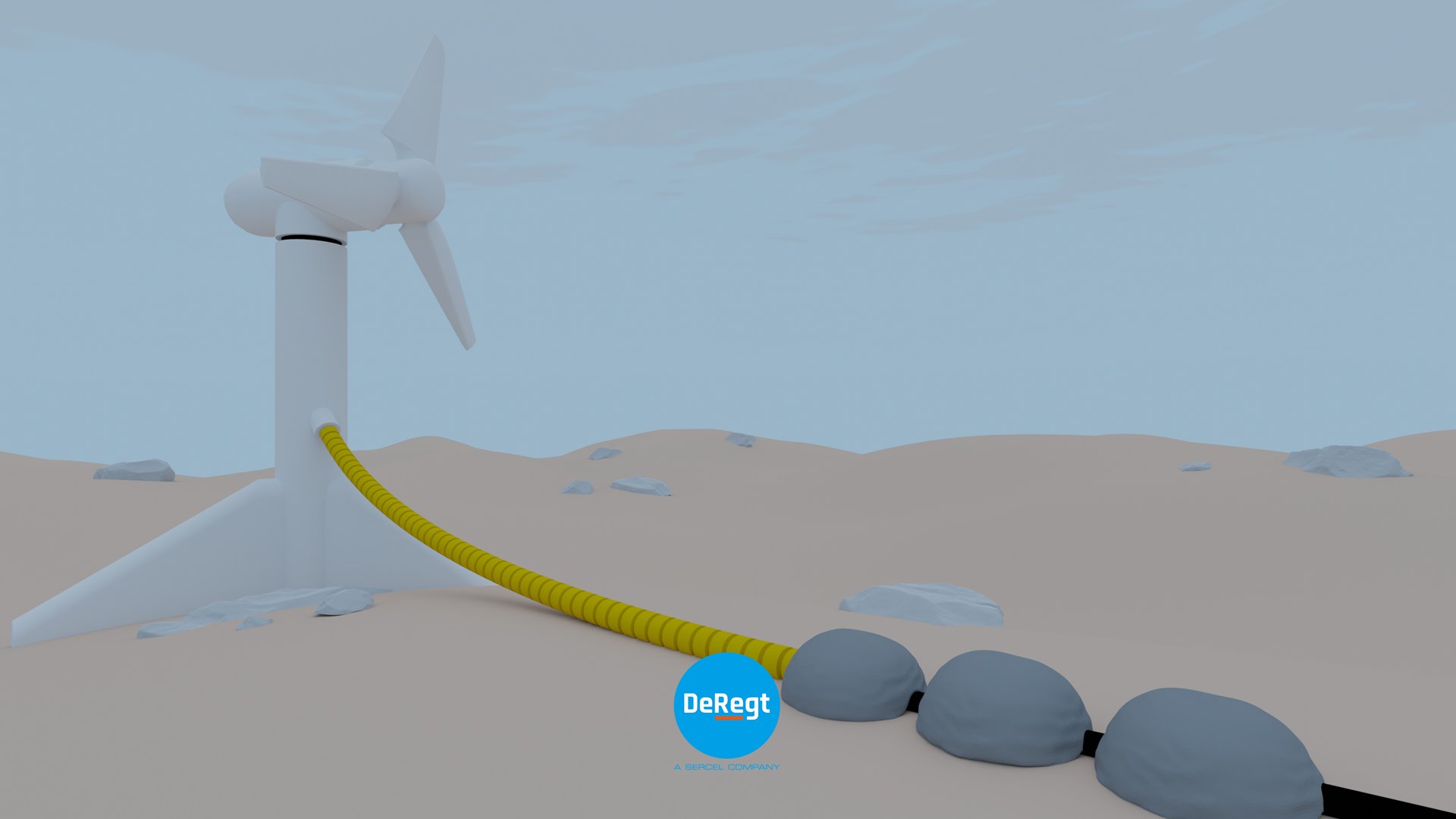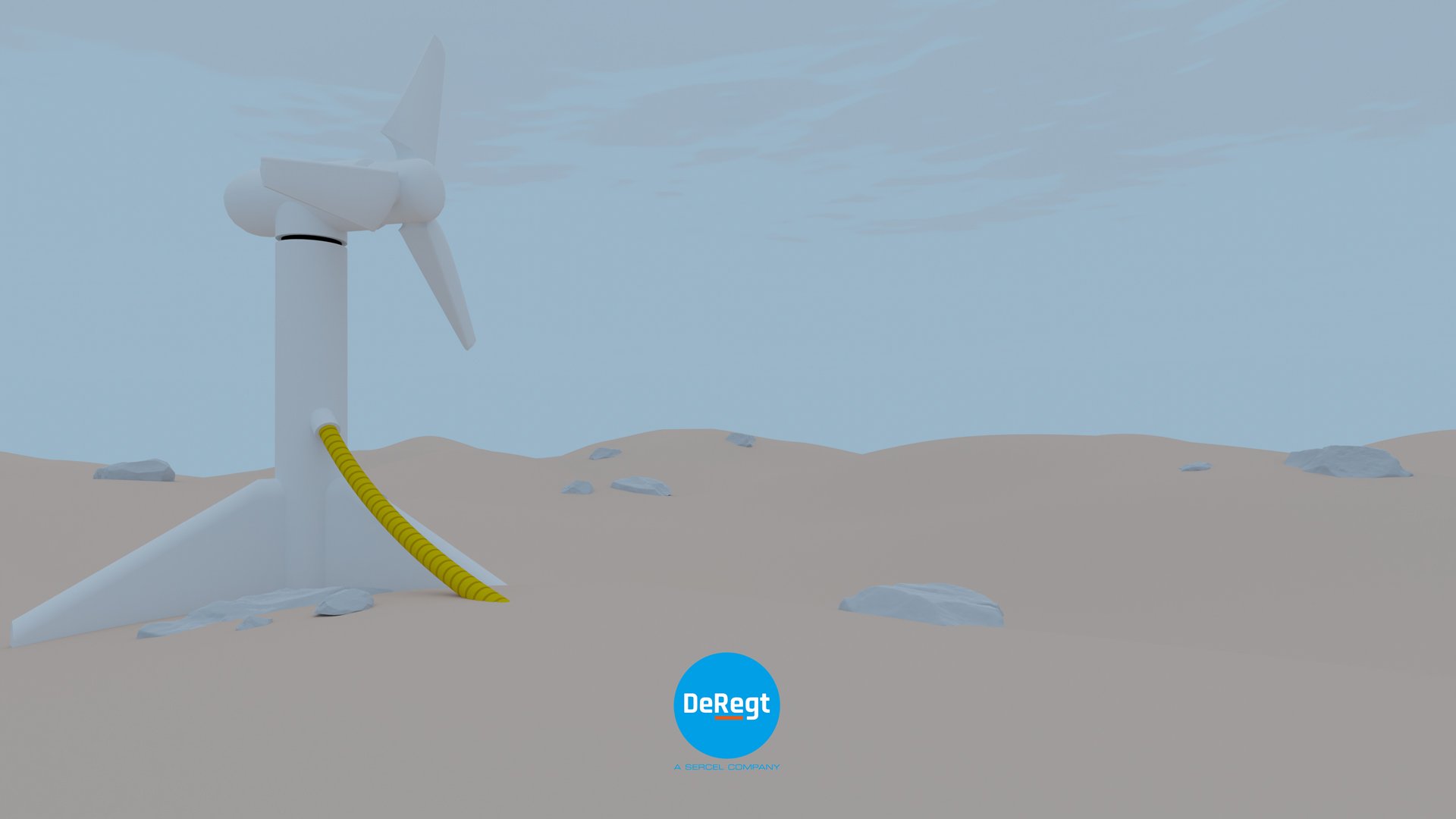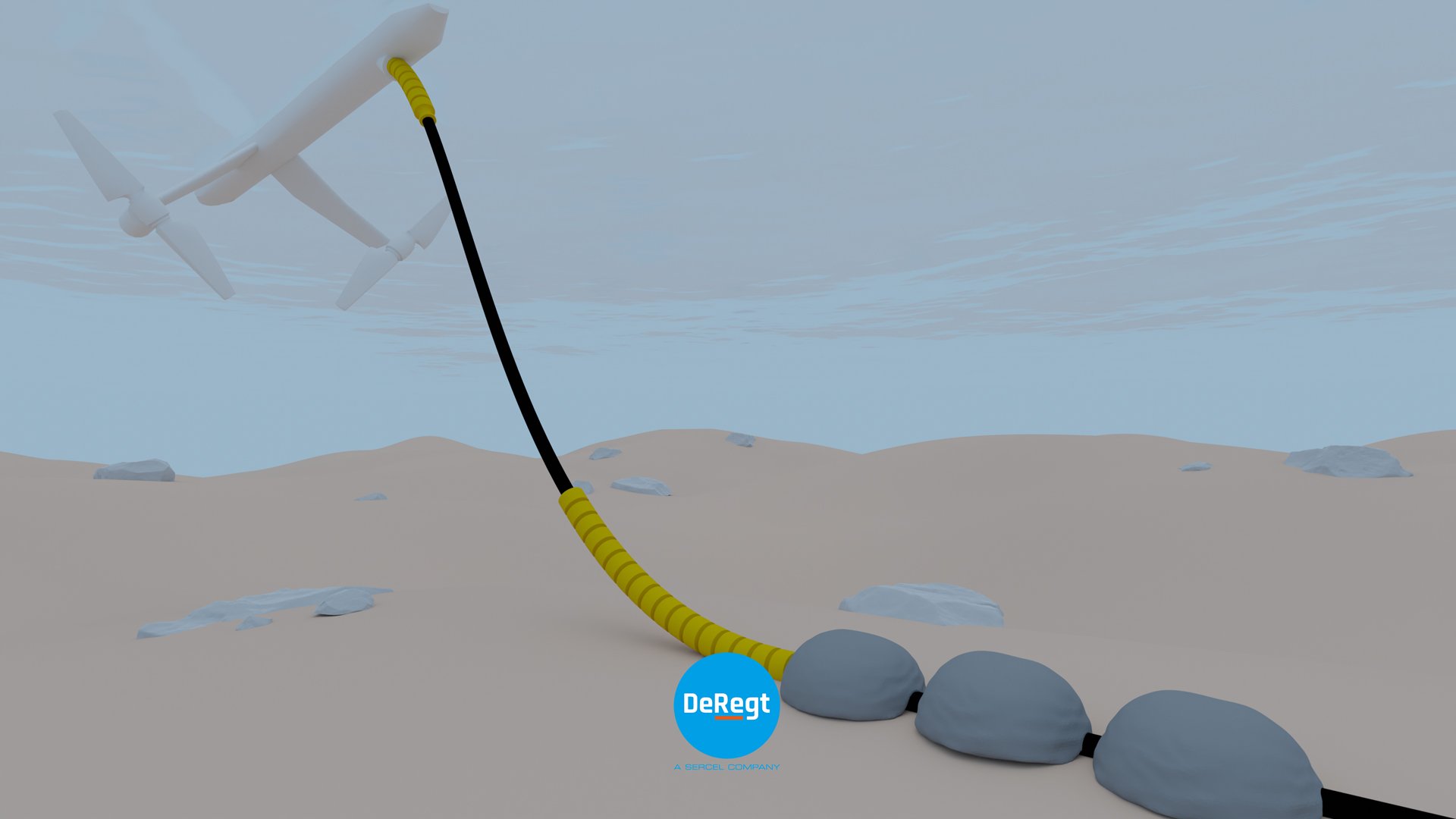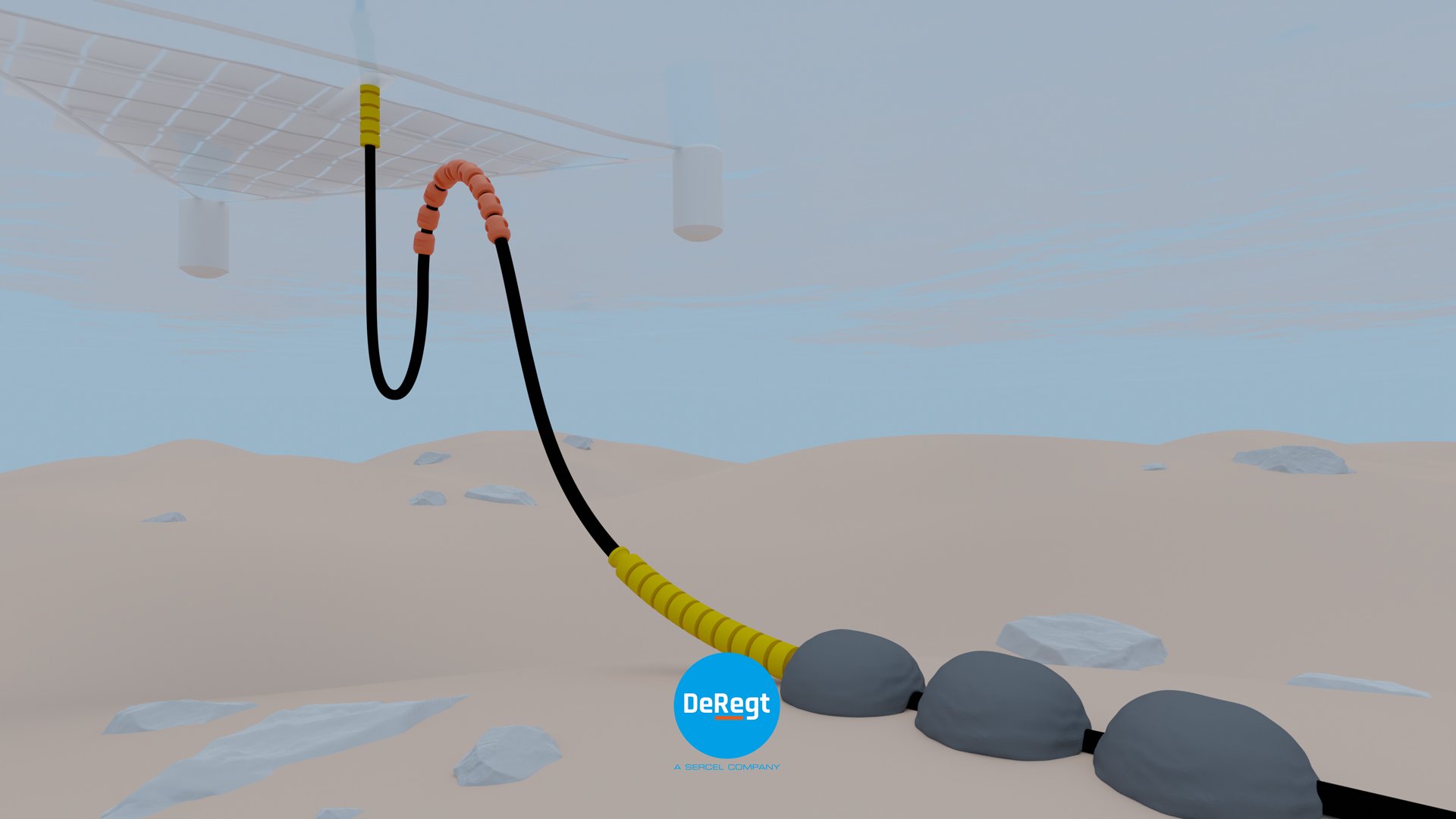When it comes to ocean energy conversion, the choice of cable plays a crucial role in ensuring the success and efficiency of your renewable energy project. With a diverse range of ocean energy converter technologies available (such as tidal turbines, wave energy converters, and floating solar installations) it is essential to understand how the type of converter impacts cable selection.
In this comprehensive guide, we will explore the key considerations and factors involved in choosing the correct cable for your specific ocean energy converter. By gaining insights into the unique requirements and challenges posed by different converter types and their placement in the offshore environment, you can make informed decisions that optimize power transmission and unlock the full potential of your venture.
Seabed-Based Devices
There's no denying that subsea cables play a crucial role in underwater devices. Many of these devices, such as bottom-mounted turbines and tidal kites, are strategically placed on the seabed.
The beauty of these devices lies in their ability to operate without dynamic cables, especially when their connection point is in close proximity to the seabed. An excellent example of this is seen in bottom-mounted tidal turbines and certain wave energy converter (WEC) designs like CorPower's C4, which fall under this category.
The selection of the appropriate cable depends on various factors such as seabed conditions, local municipalities’ regulations, and the strength of ocean currents. There are instances where trenching becomes necessary to adhere to regulations, although this can be both expensive and feasible only with the assistance of specialized remotely operated vehicles (ROVs) capable of digging through the seabed. However, in cases where deployment times are limited, or the seafloor is rocky, it becomes more practical to utilize cables that can be laid directly on the seabed.

Buried Cables
Buried cables are a great solution for long-term deployment and transferring power from underwater devices to the shore. They have been widely used to connect offshore wind monopiles and transformation stations. When these cables are buried at the correct depth, they experience very little to no movement throughout their lifespan. The Carbon Trust has developed an excellent tool called the "Depth of Lowering assessment tool," which provides valuable information if you are considering buried cables.
The stationary nature of buried cables significantly increases their lifespan to over 30 years and allows for the use of cheaper aluminium conductors. However, one drawback is the high installation cost, especially for shorter lengths (under 5 km). The installation costs are relatively high per meter, while these simpler cables have a relatively lower cost per meter. This makes buried cables particularly beneficial for large, heavy-duty cables with high voltage and high current capacity, while not best suited for ocean energy converters.

Seabed-Laid Cables
Seabed-laid cables are used for shorter distances and temporary setups in areas where there are no fishing or anchoring vessels. When testing devices, this method is more often than not the easiest, cheapest, and most practical option. However, there are a few risks and downsides involved that we will discuss. It's worth noting that dynamic cables of floating devices also become seabed-laid cables once they touch down on the seabed.
Seabed Type
The type of seabed plays a crucial role in cable design. If the cable is laid on a sandy seabed, the seabed itself may change over time, potentially causing the cable to become unburied. On rocky seabeds, there is a higher risk of cable abrasion if the cable can move around. In such cases, additional reinforcement of the cable and thorough securing it to the seabed is necessary.
Cable Placement
There is a balance to be struck with seabed-laid cables regarding their strength and secure placement. The better the cable is secured to the seabed, the lower the risk of damage or abrasion, allowing for a simpler cable design. If the cable is not tightly secured, increasing its weight and strength can help mitigate some of the potential damage or abrasion. For longer distances across sandy seabeds, strong and heavy cables with little effort put in securing the cables to the seabed can be a cost-effective option. On the other hand, for shorter distances and rocky seabeds, particularly those with high tidal velocities, investing in seabed securing methods to prevent cable movement is recommended, as any movement can gradually wear down any cable.
Potential Downsides
The main drawback of laying cables on the seabed is the high possibility of external factors causing interference. Fishing vessels dragging their nets and anchoring vessels accidentally catching the cable are common threats. Fortunately, most methods of securing a cable to the seabed also help mitigate these risks.
Floating Devices
Most ocean energy converters, along with floating solar, fall into this category. When designing dynamic cables to withstand high sea states, one of the key factors is limiting the load the cable has to bear. Cables are designed to handle linear tension but struggle with transverse loads. The areas where the cable can experience transverse loads are typically the connection points to the device and/or the anchor point on the seabed. To prevent the cable from exceeding its minimum bending radius, these areas are reinforced with bend restrictors as add-ons.
The cable attached to the device should not hinder the device's movement caused by waves. This is where moorings come into play, as the cable and its mounting point are usually not designed for this purpose. To allow the cable to move freely in any direction without experiencing tension, different layouts are employed. The Lazy-S layout is the most well-known, but for calmer sea states, the J-lay layout can also be used.
Devices That Remain Steady in the Waves (Restricted Movement Devices)
One of the key factors in determining the movements of restricted movement devices is their shape and how they are secured to the seabed in the specific deployment area. When it comes to the cable, the amount of movement it experiences is crucial for its survivability. If only minor movements are expected, the design and layout of the cable can be simpler compared to highly dynamic designs.
A major advantage of these low or slow-moving devices is their similarity to semi-submersible oil and gas structures. These structures have been equipped with umbilicals for decades, providing a valuable reference for ocean energy generators.
For floating tidal devices, a significant factor to consider is cable movement caused by turbulent flow. In areas with high current velocities, the cable may move or vibrate in the current, leading to increased fatigue loads. This problem can be addressed by adding fairings to the cable. There are various types of fairings available, and with the right fairing installed, tidal currents up to 5 m/s can be mitigated.

Devices That Follow the Movement of the Waves (Free-Floating Devices)
Devices that closely follow the movements of the waves will encounter millions of load cycles every year. Designing a cable that can withstand shallow waves is relatively straightforward, but the challenge lies in making it capable of handling high wave states. The wave profile of the deployment site and the device's movements due to these waves are crucial inputs in the design process. This dynamic movement model is a key factor in multiple design calculations, often performed using software like OrcaFlex. By combining our cable data with our customers' OrcaFlex models we can efficiently iterate on the design of the cable and interactions between cable and energy converter.
Here’s an example of how we Integrate the dynamic load profile in our design process for a free-floating energy converter:

Matching Dynamic Load Profiles and an Energy Converter
Firstly, we correlate the dynamic movements of the device in high sea states with the frequency of occurrence of these high sea states. This provides an overview of the cable's dynamic load profile. Based on this load profile, we initiate the first design iteration of the cable.
Once this design iteration is complete, we input the design into the OrcaFlex model of the energy converter. Multiple iterative simulations of the cable, layouts, and add-on configurations are then conducted to optimize the design. Once the optimal solution is determined, the design is finalized and can be translated into production.
Final Thoughts
These examples provide a glimpse into how cables can be matched to energy converters. However, it's important to note that the field of engineering in this industry is filled with endless creativity, leading to numerous exceptions and innovative approaches.
At DeRegt, we specialize in developing new designs and eagerly embrace any challenge that comes our way. If you have any questions about designing your cable for a successful deployment, we encourage you to reach out and request a free feasibility check.
In addition, we invite you to read our latest blog post titled "Designing and Prototyping a Dynamic Umbilical for Your Renewable Energy Project." This insightful article provides valuable information and practical insights on creating a robust and efficient cable system. 


